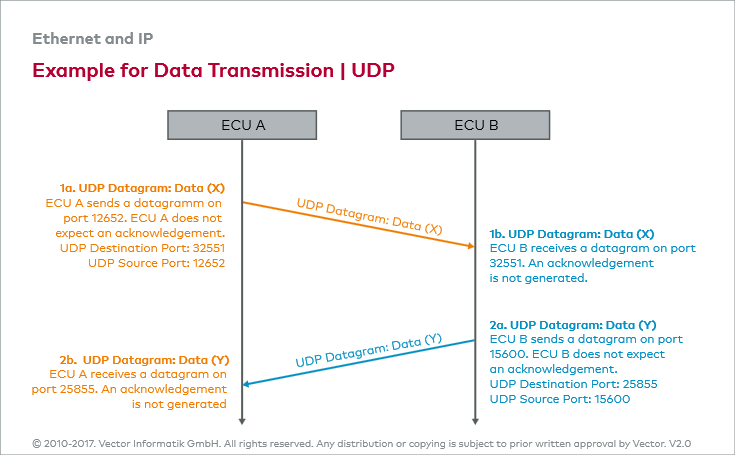UDP: User Datagram Protocol
Connectionless
UDP is a connectionless transport protocol that enables simple transmission of datagrams. In contrast to TCP, there are no mechanisms available that can ensure guaranteed data transmission. The sender is not informed about the loss or interference of a datagram. For this reason, there is also no mechanism that allows datagrams to be resent or requested again. However, these functions can be easily implemented in protocols on higher layers, if required.
Advantages
The advantage of connectionless transmission using UDP is the low transmission variations. Unlike in TCP, the sender does not have to wait for feedback from the receiver. Thus, no additional waiting times arise that could delay the sending of a datagram.
Another advantage is the ability to send datagrams as Multicast or Broadcast. This means that UDP datagrams can be sent to several nodes, or all nodes, in the network. UDP transmission thus reduces the bus load in situations where information has to be sent to multiple receivers simultaneously.
UDP packets
UDP datagrams are encapsulated in IP packets and sent using the Internet Protocol. In this case, the header of the IP packet indicates that the contained data is a UDP datagram. Because a UDP datagram can contain more data (65,535 bytes) than an IP packet (1,480 bytes), UDP datagrams can be divided into multiple IP packets using fragmentation.
Fragmentation
When a UDP datagram is fragmented, the corresponding IP packets each contain an identifier for unique identification of the UDP datagram and an identifier for the position of the fragment within the complete UDP datagram. The receiver can use this to reassemble all fragments into a UDP datagram. If an IP packet is missing, the UDP datagram can no longer be assembled by the receiver. Because the data are not requested again following errors, all IP packets of the incomplete UDP datagram are discarded.


